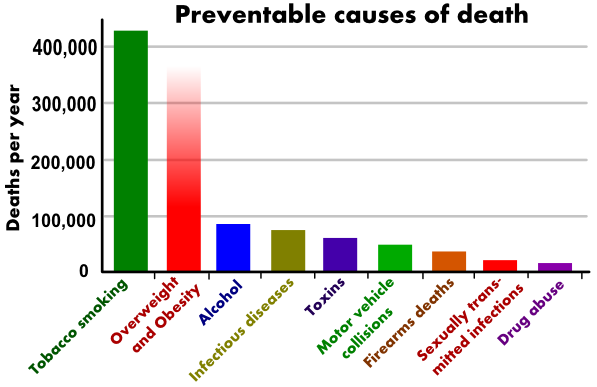This (as well as the totality of the tobacco litigation from the 1990's) is complex with a lot of moving parts, including the concealment of important health risks by the tobacco companies, the use of marketing targeting kids who are too young to fully comprehend the risks on the packaging, and the fact that tobacco companies conducted market research and determined that the "it's hazardous to your health" warnings actually appealed to the youth market's feelings of immortality and could actually be a benefit to the company. Seriously read this memorandum and see if it doesn't make your blood boil: http://legacy.library.ucsf.edu/tid/ict68d00/pdfSo this guy spent years smoking cigarettes that said right on the box they are hazardous to your health, and another 11 years smoking them after they updated it to say flat out that they caused cancer and other respiratory problems, and somehow that's the tobacco companies fault?
As I recall, tobacco companies have already paid out billions over the years for misrepresenting information, it's 2014 not 1966., and this guy started smoking years after it was revealed cigarette smoke is dangerous to your health, and continued for over a decade after it was destablished it increased your risk of cancer substantially.
So let's put aside those issues and focus on the effectiveness of the warning that was actually provided. During the first decade or so when this guy smoked, the warning on the package was:
It was only after he was well and addicted that they changed the warning to include:WARNING: THE SURGEON GENERAL HAS DETERMINED THAT CIGARETTE SMOKING IS DANGEROUS TO YOUR HEALTH
You think that a warning that smoking is dangerous or hazardous is one that is sufficient? You would be a drug company's wet dream of a juror. Look at it this way. Let's say you develop some sort of new strain of foot fungus. Nothing that will seriously affect your health, but it is itchy. Current treatments are ineffective for this strain.Smoking causes lung cancer, heart disease, and emphysema.
Two companies enter the market with treatments for this foot fungus strain. The Company A's treatment, Wunderdrug, is touted as having a 99.9% efficacy. Wunderdrug has the warning "Wunderdrug is dangerous to your health." Company B's treatment, Adequatedrug, has an efficacy of 82%, and also carries the warning, "Adequatedrug is dangerous to your health."
Which drug are you going to use? If you don't say Wunderdrug, you're a liar. Now, imagine that the FDA has cracked down on Company A and Company B and caused them to revise their warnings to more accurately advise of the risks associated with their drugs.
Wunderdrug now comes with a warning that states:
WARNING. Wunderdrug carries a risk of testicular cancer. In studies with rats, Wunderdrug has been associated with an increased risk of testicular cancer. Rats exposed to Wunderdrug were 2.5% more likely to develop testicular cancer than rats not exposed to Wunderdrug.
Adequatedrug's revised warning, now reads:
Which treatment are you now more likely to consider? Adequatedrug's 82% efficacy doesn't seem so bad in light of the fact that Wunderdrug carries a known risk of testicular cancer.WARNING: Adequate drug has been shown to cause dizziness, vomiting, nausea, and diarrhea. If you experience any of these symptoms, please discontinue use and contact your doctor immediately.
Now, I realize that smoking is not the same as medication. But the principle behind warning of the risks is exactly the same. You have to let the individual fully know the risks of a product before you can argue that they assumed those risks. The cigarette company can argue that even if they had fully warned of the risks of their product, a thirteen year old would not have understood those risks, or would not have cared that the product might cause cancer. That could be a fair argument, but this argument is one that I cannot see them WANTING to make, because then you get into the whole "marketing geared towards youth" issue that juries love to hate.



